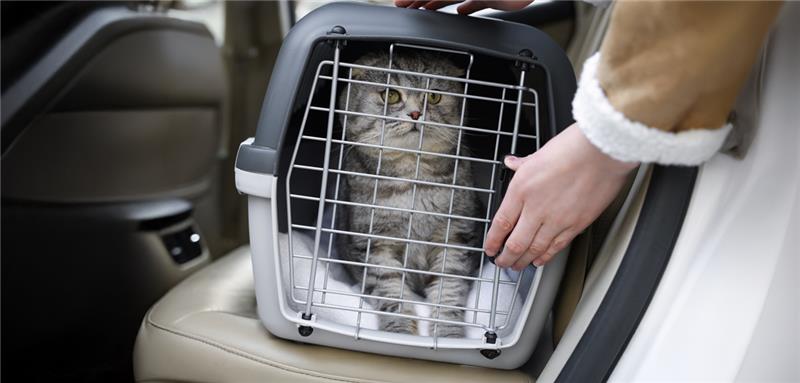You have chosen the carrier you want for your cat, and your cat has become familiar with it. Here are three practical tips for transporting your cat safely and with minimal stress.
1. Avoid sudden movements
Always hold your cat’s carrier with both hands, from underneath or on the sides, as if it were a box containing fragile items. If you use the top handle, always stabilize the carrier with your other arm. This will reduce jolts and make the journey more comfortable for your pet.
2. Reduce visual stimuli
When travelling, keep the carrier at chest height to avoid direct encounters with other cats or animals. In a waiting room, place it on a table or on your lap, never on the floor. A small table may have been conveniently placed in the room for this purpose. If not, your lap will do!
Covering the carrier with a blanket or towel will also help reduce your kitty’s stress by limiting visual stimuli (like strangers or other animals).
3. Prioritize safety in the car
When travelling by car, always place the carrier in a stable location:
- on the floor behind the passenger seat, wedged securely so that it cannot move,
- or on the back seat, securely fastened with the seat belt.
These precautions will ensure your cat travels safely in the car, while also helping to reduce its stress levels.
In short, well-planned transportation is the key to protecting your cat and reducing its stress. By handling the carrier correctly, limiting stimuli, and securing it in the car, you can make the trip much more pleasant for your companion. Adopting these simple steps will ensure your cat travels safely while enhancing its well-being.




